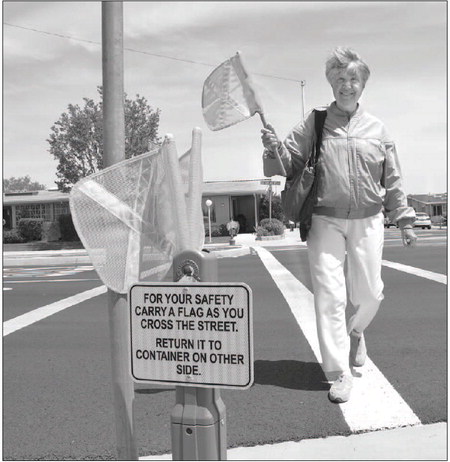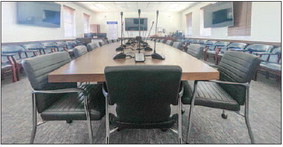Traffic Safety


The following information is from the National Highway Traffic Safety Administration.
Driving is a key to independence from the moment people get their first license. Most drivers want to hold onto that key for as long as they safely can.
Physical Changes and Driving Skills
Most older people have a lifetime of valuable driving experience. For these reasons, decisions about a person’s ability to drive should never be based on age alone. However, changes in vision, physical fitness and reflexes may cause safety concerns. People who accurately assess these changes can adjust their driving habits so that they stay safe on the road, or choose other kinds of transportation.
The following information, developed by the USAA Educational Foundation, AARP and the National Highway Traffic Safety Administration, outlines the physical effects of aging, as well as tips on coping with them so that you remain a safe driver for as long as you can.
Vision
Good vision is essential for good driving health. But as people age, they experience declines.
Symptoms of declining vision include problems reading highway or street signs; recognizing a friend from across the street; seeing lane lines and other pavement markings, curbs, medians, other vehicles and pedestrians, especially at dawn, dusk and at night, and discomfort at night from the glare of oncoming headlights.
What Can Be Done?
People should wear prescribed glasses and make sure it’s a current prescription. Don't rely on an old pair; replace broken glasses right away with a new prescription. Avoid eyewear with side pieces that may block vision.
Drivers should not wear sunglasses or tinted lenses at night. This reduces the amount of light that reaches the eyes and makes driving much more hazardous.
Don’t darken or tint car windows. Avoid driving at dawn, dusk and night. People who are extremely light-sensitive should check with an eye doctor to see if that can be corrected.
Clean windshields, mirrors and headlights and make sure headlights are correctly aimed when conducting a car inspection. Cars with larger dials and easy-to-read symbols are helpful. Turn brightness up on instrument panels.
People should sit high enough in their seats to see at least 10 feet of the road ahead of them. This will make a big difference in reducing the amount of glare from opposing headlights at night. Use a cushion to elevate car seats. Also, look to the lower right side of the road when there is oncoming traffic. Some vehicles have rearview mirrors that automatically filter out glare.
People who are 60 or older should see an eye doctor every year to check for cataracts, glaucoma, macular degeneration, diabetic retinopathy and other conditions associated with aging.
Physical Fitness
Diminished strength, coordination and flexibility can have a major impact on people’s ability to safely control their cars.
Symptoms of decreased fitness include:
• People who have trouble looking over their shoulders to change lanes or looking left and right to check traffic at intersections.
• People who have trouble moving their feet from the gas to the brake pedal or turning the steering wheel.
• People who have fallen down once or more in the previous year.
• People who walk less than one block per day.
• People who can’t raise their arms above their shoulders.
• People who feel pain in their knees, legs or ankles when going up or down a flight of 10 stairs.
What Can They Do?
With a doctor’s approval, do stretching exercises and start a walking program. Walk around the block or in a mall. Also, check health clubs, YMCAs, senior centers, colleges and hospitals for fitness programs geared to older people.
People should get examined by a doctor if they have pain or swelling in their feet, or pain or stiffness in their arms, legs or neck. A doctor may prescribe medication and/or physical therapy to help alleviate pain.
Eliminate the driver’s side blind spot by adjusting side mirrors.
People should keep alert for sounds outside their cars. Limit passenger conversation and background noises from the radio and stereo.
Watch for the flashing lights of emergency vehicles.
Sit at least 10 inches from the steering wheel to reduce the chances of an injury from an air bag in the event of a collision. Remember to always wear your seatbelt.
Driving requires dividing attention between multiple activities and being able to react quickly to situations that often arise without warning. Use these tips to help stay safe on the road and protect other drivers and pedestrians.
Leisure World pedestrians have neon flags to hoist while they cross the street. Drivers, pe destrians and cyclists need to share the road and exercise caution.





